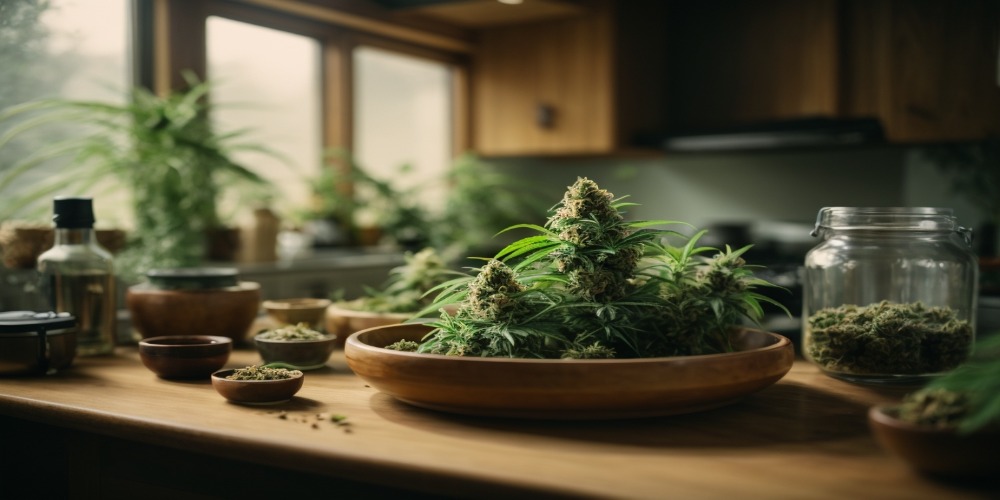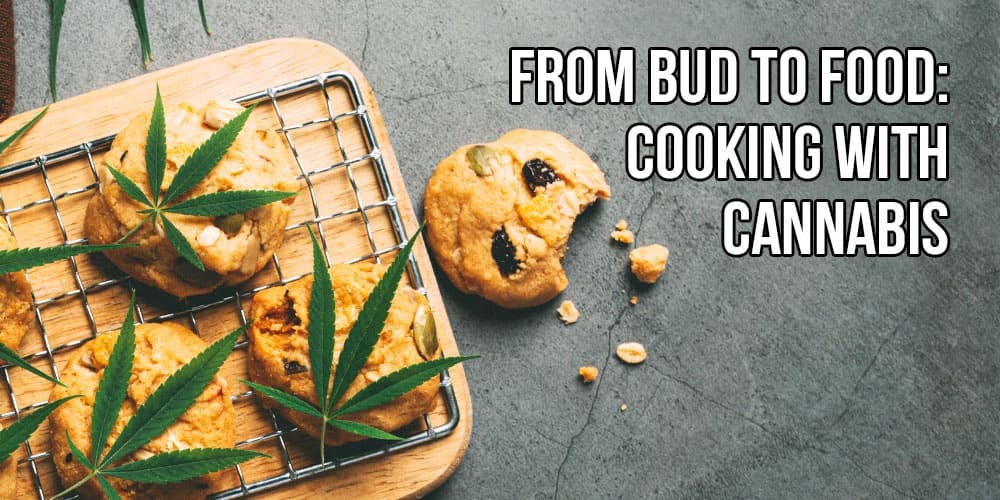Cooking with Cannabis has taken the culinary world by storm, transforming the way we think about food and its potential to deliver both flavor and a unique, elevated experience. From bud to plate, this gastronomic adventure explores the fusion of cooking with cannabis, unlocking a world of creativity, taste, and, of course, the euphoric effects of this remarkable plant. In this culinary journey, we’ll dive deep into the art of Cooking With Cannabis, uncovering the secrets of infusing your favorite dishes with the magic of marijuana, and how it has become a growing trend among food enthusiasts and connoisseurs alike.
- Strains for Appetite: Rediscovering the Joy of Food
- Best foods to boost your high
- Does weed have calories?
Cannabis in the Kitchen

Understanding the effects of ingested cannabis is essential before exploring recipes and cooking techniques. When cannabis is eaten rather than smoked or vaped, it produces a distinct kind of high. This difference in experience is primarily due to the way the body processes THC, the psychoactive element in cannabis. Ingesting cannabis leads to a high that is often described as more intense and longer-lasting compared to other methods of consumption.
The reason behind this heightened effect lies in the metabolism of THC. Once ingested, THC travels to the liver where it is converted into 11-hydroxy-THC, a metabolite that is more potent than THC itself. This conversion is responsible for the stronger and more prolonged effects experienced when cannabis is consumed in edible form. Understanding this process is crucial for anyone looking to explore the culinary aspects of cannabis.
Experience the rich flavors of our Blackberry Cannabis-Infused Gummies. These gummies combine the luscious taste of blackberries with effects that awaken desire, satisfy hunger, and promote relaxation.
Decarboxylation: The First Step

The journey of cooking with cannabis starts with an essential step known as decarboxylation. In its raw form, cannabis contains Tetrahydrocannabinolic acid (THCA), which doesn’t produce psychoactive effects. To unlock the full potential of cannabis, it needs to be heated, a process that transforms THCA into Tetrahydrocannabinol (THC), the psychoactive compound responsible for the cannabis high. Decarboxylation is crucial as it ensures that the final edible product will have the desired effects.
Executing decarboxylation is a straightforward process. Begin by spreading your cannabis in an even layer on a baking sheet. Then, bake it in an oven preheated to approximately 245°F (120°C) for about 30 to 40 minutes. This gentle heating activates the THC, making it ready for use in cooking, while being careful not to destroy its properties. It’s a balancing act of temperature and time to make sure the cannabis is optimally prepared for culinary use.
Infusing Cannabis into Food

Selecting the right strain of cannabis is a crucial factor in the culinary world of cannabis, as it significantly influences both the flavor and effects of your dish. Indica strains are known for their relaxing and sedative high, making them ideal for dishes meant to promote relaxation. On the other hand, sativa strains tend to produce a more energizing and uplifting effect. Beyond their effects, these strains also differ in flavor profiles – some may offer earthy undertones, while others could have hints of citrus or sweetness, adding a unique dimension to your culinary creations.
Infusing food with cannabis typically involves using fats, such as butter or oil, because THC is fat-soluble. The most popular method involves simmering decarboxylated cannabis in your chosen fat on a low heat setting for several hours. This slow process allows for the THC to be fully extracted into the fat. Once the simmering is complete, the mixture is strained to remove any remaining plant material, leaving behind cannabis-infused butter or oil. This infused ingredient can then be used in a variety of recipes, seamlessly integrating the effects and flavors of cannabis into your cooking.
Indulge in Kiwi Live Resin Sugar Diamonds, an indica-dominant strain known for its subtle yet effective high. This strain delivers an incredibly relaxing experience, leaving you with a clear head and a mellow body sensation.
Cooking and Baking with Cannabis

Cannabis offers a versatile ingredient for both savory and sweet culinary creations, with the key lying in the comprehension of the strain’s flavor profile and its synergy with other components of the dish. For example, cannabis strains with citrusy undertones can be a delightful addition to desserts like lemon tarts or can enhance the flavors in a Mediterranean-inspired dish. The art of cooking with cannabis involves not just the infusion of its active compounds but also an understanding of its taste nuances and how they complement various food types.
The realm of cannabis-infused cooking spans a wide spectrum of recipes, ranging from the iconic “pot brownie” to more elaborate and sophisticated culinary endeavors such as cannabis-infused pasta dishes or innovative salad dressings. Regardless of the complexity of the recipe, the fundamental principle remains consistent: replace a portion or the entirety of the regular fat used in the recipe, be it oil or butter, with cannabis-infused variants. This approach not only imbues the dish with the desired cannabis effects but also integrates the unique flavor notes of the strain, creating a multi-dimensional gastronomic experience.
Dosage and Safety

Dosage management is the cornerstone of cooking with cannabis, as it determines the balance between enjoying its benefits and avoiding adverse effects. Achieving the right dosage involves calculating the THC content in your cannabis-infused fat and then adjusting the serving sizes accordingly. However, this calculation can be challenging, as home infusion lacks the precision of commercial processes. Therefore, it’s advisable to start with a smaller quantity of cannabis when infusing, then test the results to gauge potency. This approach helps in achieving the desired effect without overconsumption, ensuring a pleasant and safe culinary experience with cannabis.
When it comes to storing and serving cannabis-infused dishes, clear labeling is imperative to prevent accidental consumption, especially in households where not everyone partakes. Additionally, it’s important to remember that the effects of ingested cannabis can take longer to manifest, typically ranging from 30 minutes to 2 hours. This delayed onset requires patience and restraint to avoid consuming too much before the initial effects are felt. Ingesting cannabis often results in a more intense and prolonged experience compared to inhalation, so mindfulness and moderation are key, especially for those new to cannabis edibles.
Experience the joyous essence of our Cherry Cannabis-Infused Gummies. Bursting with vibrant cherry flavor, these gummies ignite happiness, stimulate appetite, and inspire lively conversations.














